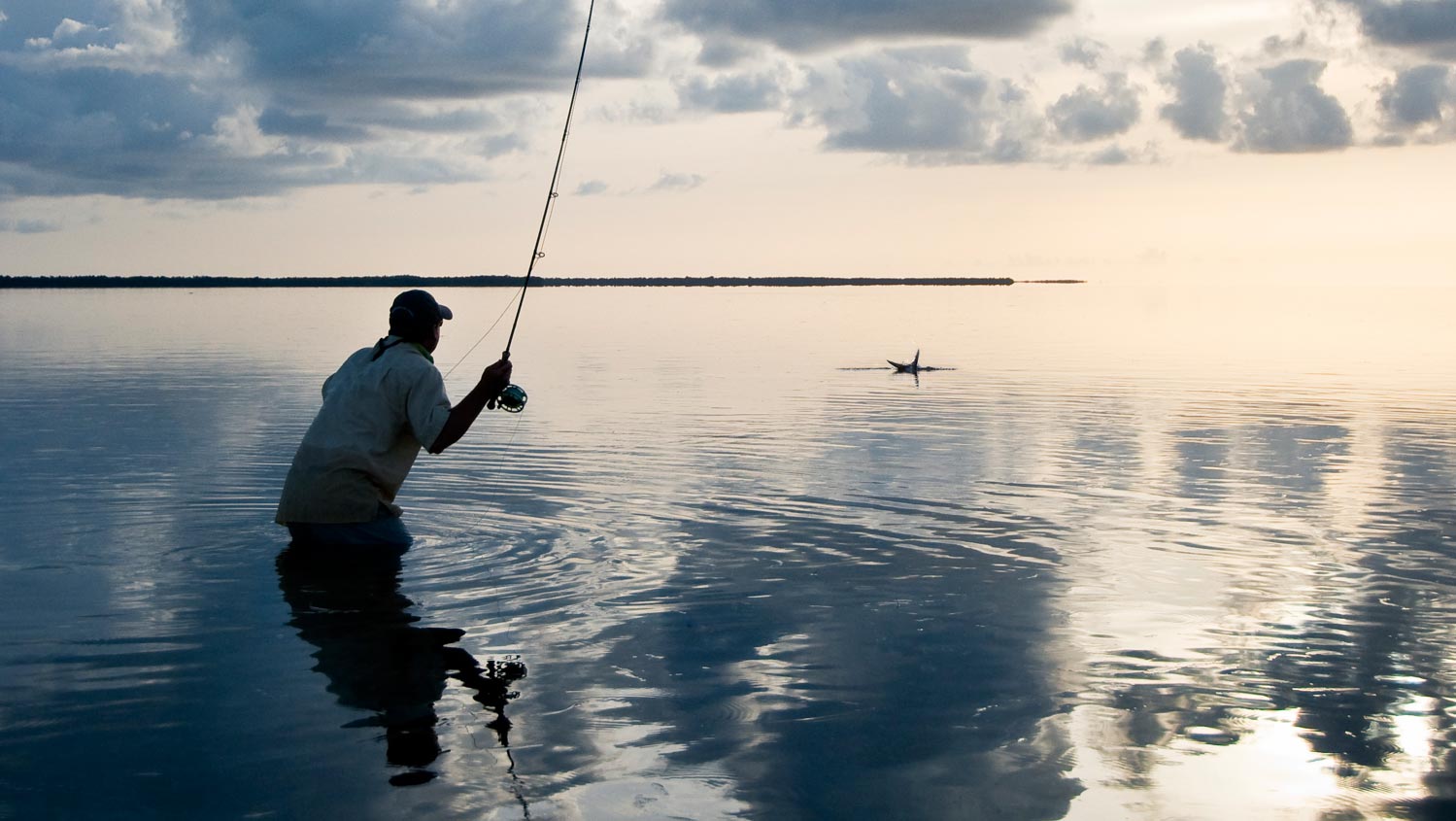By Louis Cahill
What does skeet shooting have to do with fly fishing?
More than a day of cast and blast, for sure.
Target picture is a term skeet shooters use to describe the visual cue a shooter uses to tell him when to fire. Since the shooter is leading the clay, rather than firing directly at it, it’s important to visualize the lead for a given shot and fire when you see that “picture.” It’s a skill that separates a real shooter from a novice.
The same principal works in fly fishing. Being able to visualize the presentation before making it pays off big. It’s a simple idea when you are casting a fly to a rising trout. The actual target is well up stream of the rise form, since the fish will actually be holding upstream of where you see him rise. The current carries him downstream as he comes for the fly so, depending on the current speed and how deep the fish is holding, it can be quite a difference. Of course, your goal is to land the fly just outside of the fish’s field of sight, so you may need to lead him upstream a good ways.
What is simple on a trout stream usually becomes devilishly complex in the salt and leading a fish is no exception.
When casting to saltwater species there are a lot of variables to take into account. The fish’s speed and behavior, of course, but also the movement of both tide and boat. The angle and intensity of the light and wind come into play too. All that is to say that you never cast directly to the fish. Like a skeet shooter, you need a picture in your head of the right lead for a given situation.
 I’m not going to dig into the minutia of figuring every variable. The truth is it’s mostly gut feeling when the time comes to make the shot. Doing it right consistently only comes with experience and practice, but here’s the problem. The way most people practice builds the wrong target picture. If you cast to a hula-hoop when you practice, you’re begging to hit the fish on the head when you’re out on the water.
I’m not going to dig into the minutia of figuring every variable. The truth is it’s mostly gut feeling when the time comes to make the shot. Doing it right consistently only comes with experience and practice, but here’s the problem. The way most people practice builds the wrong target picture. If you cast to a hula-hoop when you practice, you’re begging to hit the fish on the head when you’re out on the water.
A much more productive method is to make fish-shaped targets to cast to when practicing.
Set them out at different distances and angles. Practice presenting to these targets using both forward and back cast. Imagine them moving at different speeds. This kind of practice helps build your mental picture of your target and will make good presentations much more natural.
It doesn’t matter what your targets are made from. I use pool noodles. You can cut tails out of cardboard to practice casting to tailing fish. You can push yourself by practicing on windy days or even having a friend or kid roll a ball for you to cast to. Just like shooting clays. I promise you that integrating target picture into your casting practice will help you catch more fish.
This video shows a good practice set-up. It works just as well in the yard.
Louis Cahill Gink & Gasoline www.ginkandgasoline.com hookups@ginkandgasoline.com Sign Up For Our Weekly Newsletter!


Great article about 2 activities I love very much. That sight picture is closely connected to muscle memory. The amount of practice/experience becomes a factor at the critical moment when you make the cast or pull the trigger. As a wise shooter once told me, “Perfect practice creates the possibility of perfection. The only thing that screws it up in your brain.”
The other thing to bear in mind when figuring out how to properly lead a fish is that your fly will go where you are looking. Just like a mountain biker knows that you always look at where you want to go, not at what you want to miss, a caster should switch his eyes from the fish to the target zone when he starts his forward cast. It will keep your guide from pointing out that the fish usually eat from the front end.